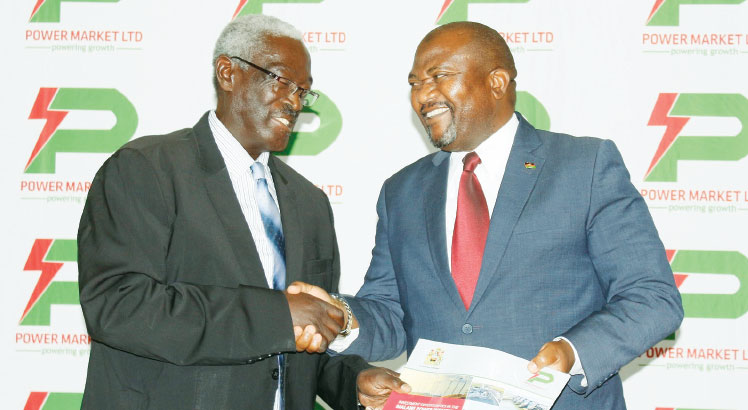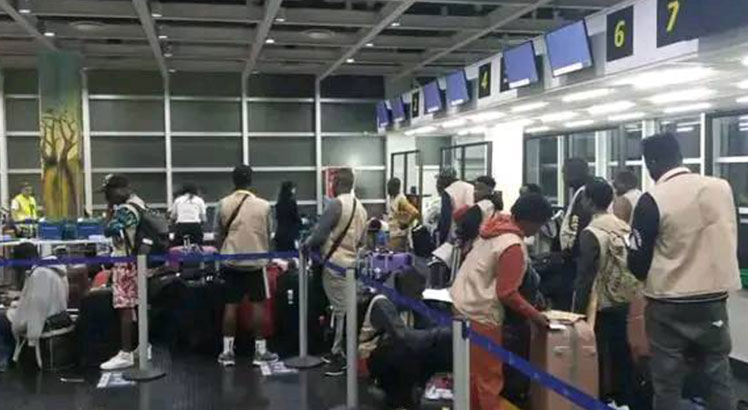Firm moves to attract power sector investors
Power Market Limited (PML) says the compilation of the power industry investment opportunities will serve as a window for potential investors which will help the country to increase power generation to meet its growing demand.
Speaking during the launch of the compendium in Lilongwe on Thursday, PML chief executive officer (CEO) Rosemary Mkandawire was optimistic that the incentives for investment will attract investors.
She said: “It is important that the world out there knows that Malawi is endowed with a lot of resources that can be used to generate power.
“We need to tell them that Malawi is open for business and with all the incentives that have been put in place, we are sure that the investors will enjoy working with us in the power sector.”

Mkandawire also highlighted the significance of generating sufficient power, which is projected to grow to 1 873 megawatts (MW) by 2030, by diversifying power sources.
“For a long time we have been singing about the mining industry, but mining requires a lot of energy and that is why we thought that for us to give a lot of power to the industry and the mining sector, it is important that we invite the world to us so that they can come in and set up power plants,” she said.
Apart from the projects that investors can possibly venture into, the compendium, the first of its kind in the energy sector, also spells out some of the incentives to attract investors.
Since the government designated power generation as a priority sector, some of the benefits attached to the power industry, especially for those with minimum investments of $30 million (about K31 billion) include tax holidays of up to 10 years and duty exemptions on importation of capital goods and building materials outlined under the Taxation (Priority Industries) Regulation 2013.
The energy sector’s specific incentives on the other hand include duty-free importation, but value added tax payable at 16.5 percent on electricity generation equipment such as fuses, transformers, insulators, conductors, surge arrestors and other things.
The compendium indicates that the year-long sunlight and strong winds present opportunities to invest in solar and wind energy and geological reports indicate the presence of gas, coal and geothermal resources that can also be used to generate electricity.
The compendium shows that 13 coal fields have been identified, which include Livingstonia and North Rukuru in Rumphi; Nthalire Basin and Kibwe in Chitipa and Lengwe Coal Basin in Chikwawa.
Additionally, there is wind power potential and 11 sites with estimated 824MW capacity identified in Lilongwe, Chikangawa in Mzimba, Nkula in Blantyre and Chitipa.
Further, the compendium shows that there is also untapped geothermal power potential in 24 sites, biogas in three possible sites and gas power potential with the existence of natural gas deposits along the Great Rift Valley stretching across the North to the South of the country.
The Malawi Government already conducted feasibility studies for Chasombo Hydropower Project and Chizuma Hydropower Project both located on Bua River in Nkhotakota each with capacity to generate 50MW.
The compendium also outlines Kasitu and Chiweta geothermal projects in Nkhotakota and Rumphi, respectively and others which still require detailed feasibility studies.
Speaking during the launch in Lilongwe, Minister of Energy Ibrahim Matola said with the power industry compendium, Independent Power Producers will see such potential areas where they can invest as the feasibility studies have already have been done.
He further called on CEOs of Electricity Supply Corporation of Malawi, Electricity Generation Company and PML to ensure that the investors who signed the power purchase agreements are on site by September end this year.
“We will revoke the licences of those who will continue to be idle and give their agreement to other serious investors instead,” he warned.
Malawi is currently facing an electricity deficit of 130MW following the damage to Kapichira Hydro Power Plant by Tropical Storm Ana in January this year.





